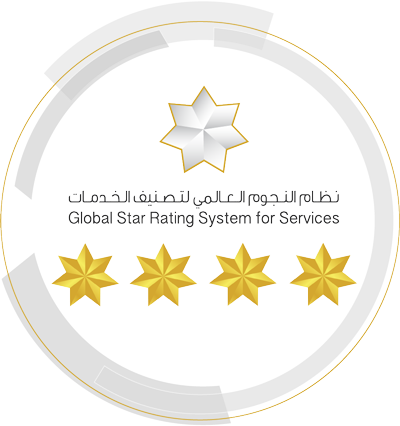Works may be valued for their historical importance through their meaningful association with individuals, communities or events that have made a significant contribution to the broad patterns of the UAE’s development. Works may embody the distinctive aesthetic, physical, or architectural attributes characteristic of the political, social, and economic trends of a particular period. Works may also be associated with events that have had, or may continue to have, a profound effect or symbolic function on a particular community or cultural group or nation.

UAE National List of Modern Architectural Heritage
Overview
The identification, evaluation and listing of places of throughout the UAE is a way of celebrating cultural significance and safeguarding the legacy of special architectural and historic sites, works, and buildings.
The list allows national recognition, and encourage research, documentation, conservation, and preservation efforts. In the long term, the National Heritage List will enhance the country’s global position and increase cultural and architectural tourism.
Criteria for Nomination
01
Demonstrates a meaningful association with individuals, communities or events that have made a significant contribution to the broad patterns of the UAE’s development.
02
Embodies the distinctive aesthetic, physical, or architectural attributes characteristic of the political, social, and economic trends of a particular period.
03
Demonstrates an approach to and/or a lasting influence on urban planning or architectural, urban and/or landscape design that can be characterized as significant in the UAE or globally.
04
Demonstrates skill and expertise in resolving the relationships between mass, interior and exterior spaces, materials and detailing that is characteristic or an interpretation of Modern and post-Modern movements, or other recognized design movements.
05
Demonstrates the use of innovative technology to solve challenges for its time.
06
Demonstrates a sustained environmental performance quantified in terms of material use, resource consumption and environmental impacts over the whole life cycle.
07
Contributes to the community’s sense of identity and enrichment of the UAE’s diversity, or is recognized as a place of collective memory for the UAE.
Values
Historical Value
Design Value
Works should demonstrate an approach to urban planning or architectural, urban and/or landscape design that can be characterized as significant in the UAE or globally. The value may be determined by the degree to which the intrinsic attributes that are associated with, or inspired by, Modern and post-Modern movements, or other recognized design movements, in architecture, urban design and landscape design, are incorporated. The design may fulfill a particular need within the community and/or positively impact the community. The design may respond to/integrate with the immediate social, cultural, physical or environmental context. A work may also be valued for identifiable, unusual and/or unique design characteristics, or for a lasting influence on the practice of urban planning, architecture, urban design and landscape design in the UAE.
Aesthetic Value
The aesthetic value of a work is determined by assessing a range of factors that includes, but is not limited to visual appearance, possibly in relation to its context, or sensory engagement that enhances user experience.
Technological Value
Works may derive their value from factors such as the use of innovative technology to solve structural, programmatic, or, aesthetic challenges for its time. This may include employing advanced or innovative materials, construction techniques, building technology, or the development of building systems which may have had a lasting influence in the UAE, regionally or globally. Works may also be valued for their creative adaptation at a particular period, in the fields of design, construction, manufacturing, craftsmanship, or some other technical field.
Environmental Value
Attention to environmental concerns could be an important factor in assessing work. Consideration may be given to environmental performance quantified in terms of material use, resource consumption and environmental impacts over the whole life cycle. Other aspects include i) the adoption of innovative and integrated passive design strategies, responding to and/or enhancing the environmental context ; ii) the intentional use of durable material and equipment that have low recurrent embodied energy and that can be repaired and recycled, so as to continue to perform their function over an extended lifetime; and/or iii) the potential for re-use and/or adaptation, reconciling the requirements for modern standards of operation and enhancing performance.
Social Value
The social value of works being considered may be evaluated based on the degree to which they respond to and/or reflect changing social patterns during the time period that they were designed and constructed. Social value could be illustrated by the work’s ability to improve either living or working conditions. Social value could be demonstrated by the degree to which a work may support the community’s interactions, activities or, traditions; contributes to a community’s sense of identity and belonging; or performs a role in maintaining the collective memory of a community or the nation.
Nominating works on UAE’s National List of Modern Architectural Heritage
The Ministry of Culture will annually open a call for local governments to nominate works of national significance to be listed on UAE’s National List of Modern Architectural Heritage. The cycle ranges for a period of six months that goes through a process of assessments by specialized committees based on values and criteria. The final announcement of listed buildings is announced at the end of the cycle.
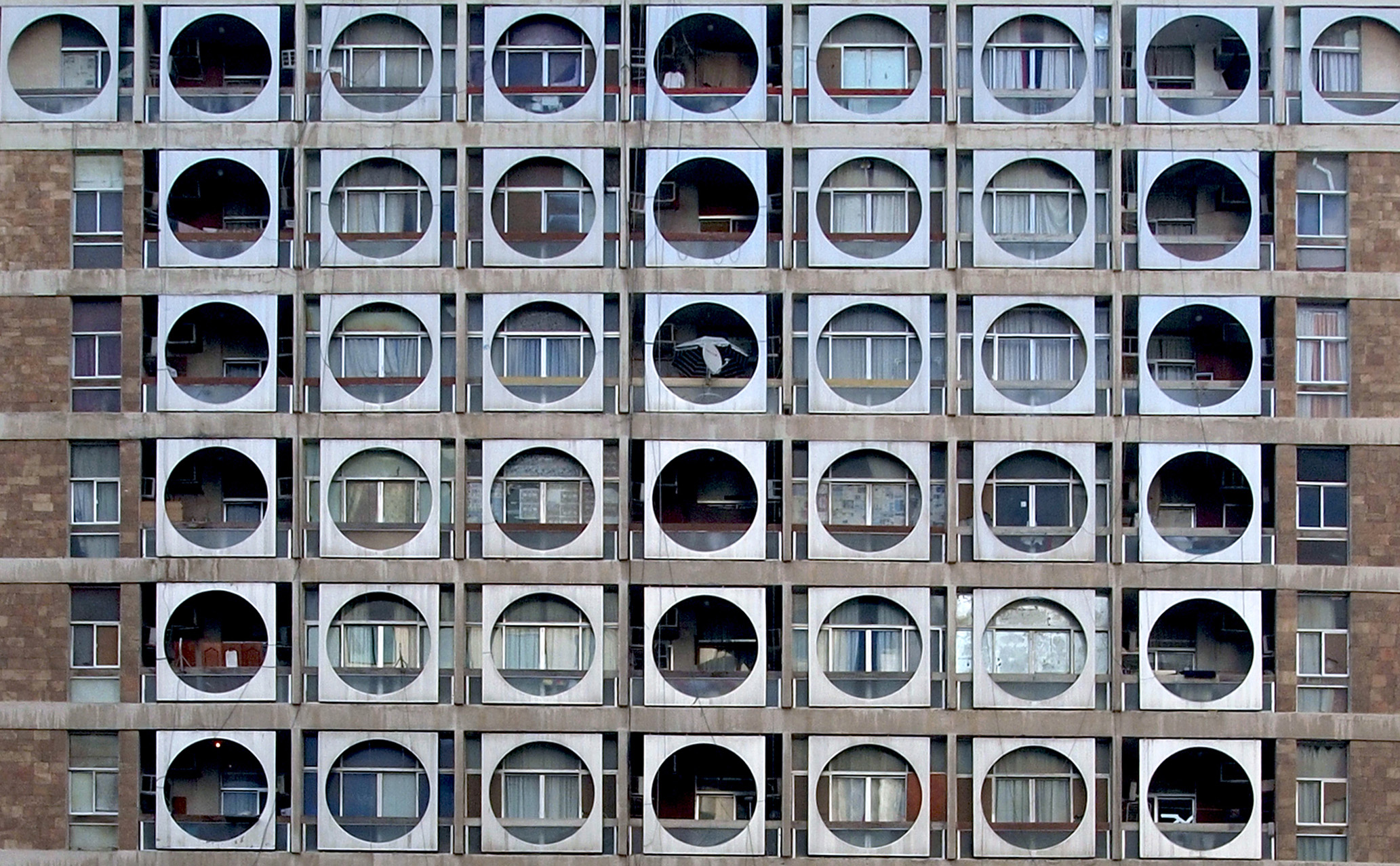
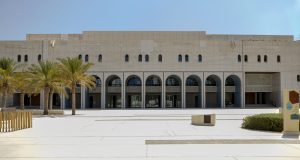
The Cultural Foundation
The Cultural Foundation building is strategically located at the intersection of Airport Road and Electra Street, in the CBD near Qasr Al Hosn. Designed by TAC and led by architect Hisham Ashkouri, it was completed in 1982, featuring a three-story structure housing a library, indoor auditorium, exhibition hall, outdoor auditorium, and meeting rooms...
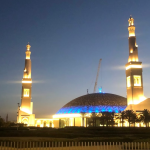
Islamic Institute Complex
Located adjacent to Sheikh Khalifa Grand Mosque in Al Ain city, the campus is a prominent landmark occupying a block of 110,000 sqm. Designed by renowned Egyptian architects Dr. Galal Moumin and Farouq El Gohari, it was completed in 1976 and inaugurated by the rulers of the seven emirates...
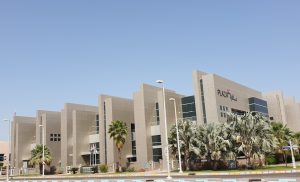
The National Consultative Council
The National Consultative Council is situated in the historic Qasr Al Hosn, located in Abu Dhabi city. Originally constructed as the Majlis of Sheikh Zayed in 1968, it later became the house of the National Consultative Council in 1971 and the Federal National Council in 1972...
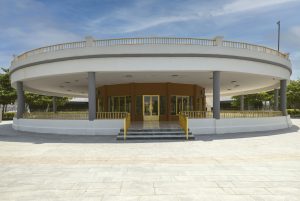
The Union House
The Union House, built in 1965, holds historical significance as the site where the union of the Emirates was signed in 1971. Located on Jumeirah Road, it was used by Sheikh Rashid bin Saeed Al Maktoum for meetings and government activities...

Burj Rashid
Burj Rashid, inaugurated in 1979, was the tallest tower in the Arabian Gulf until the early 21st century. Designed by architect John Harris, it consisted of 39 floors and was part of Sheikh Rashid's vision for Dubai's urban and commercial development. The tower included a hotel, exhibition spaces, offices, banks, conference halls, and parking facilities...
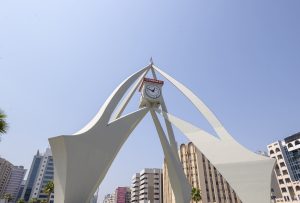
Clock Tower
The clock tower in Dubai stands as a symbol of modernism and the city's transformation into a global hub. Its minimalist design and regional modernist elements reflect the principles of modern architecture. Functionality is emphasized with the tower's hollow structure allowing for visibility and traffic flow...

Khalid Bin Muhammed School
Khalid Bin Muhammed School, located in Sharjah's Al-Manakh neighborhood, is part of an educational cluster with two adjacent buildings. The two-story school consists of 24 classrooms, labs, a library, and a theater, with educational spaces organized around interconnected courtyards. Currently, the school serves as a venue for the Sharjah Art Foundation and hosts scholars from the Africa Institute...
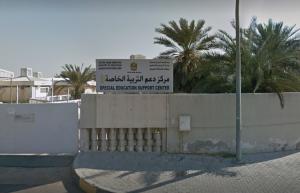
The Special Education Support Center
The Special Education Support Center in Sharjah occupies a building based on the "Rais and Tukan" kindergarten prototype from 1973. It was commissioned to meet the growing educational needs of the United Arab Emirates...
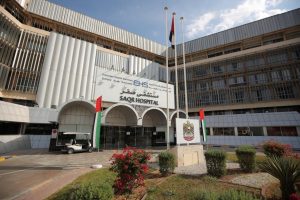
Saqr Hospital
Saqr Hospital, established during the early days of the Union, is one of the first modern hospitals with specialized departments. Located in the Seih Al Qusaidat area, it serves various regions and all segments of society. Built using modern materials, the hospital features a large area divided into floors and wings. Notably, it has been the designated facility for all births in Ras Al Khaimah for nearly 38 years. Saqr Governmental Hospital remains the main healthcare destination, preserving its original structure and design despite expansions to accommodate population growth.

Al Qasimiyah School
Al Qasimiyah School, located in Sharjah's Al-Manakh neighborhood, forms an educational cluster alongside two adjacent buildings. The school features a two-story building with classrooms...

